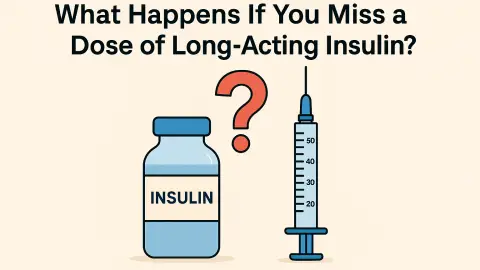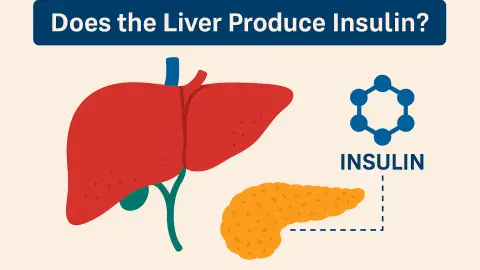The insulin stimulation test, also known as the insulin tolerance test, is a specialized diagnostic tool that provides crucial insights into the body’s hormonal and metabolic functions. It is primarily used to evaluate how the body regulates blood sugar, assess insulin sensitivity, and diagnose conditions related to hormonal imbalances, such as growth hormone deficiency, adrenal insufficiency, or diabetes.
Locations in Saugerties, New York … insulin resistance test
What Is the Insulin Stimulation Test?
The insulin stimulation test is a diagnostic procedure used to assess how the body reacts to insulin-induced hypoglycemia (a controlled lowering of blood sugar levels). By administering insulin intravenously, the test evaluates the body’s ability to regulate blood glucose and produce critical hormones in response to stress. It provides valuable insights into the functionality of the hypothalamic-pituitary-adrenal (HPA) axis and overall metabolic health.

Key Objectives of the Test
The test focuses on assessing three main areas of metabolic and hormonal function:
- Glucose Tolerance:
- Determines how effectively the body manages blood sugar levels in response to administered insulin.
- Highlights any abnormalities in glucose regulation that may indicate diabetes, insulin resistance, or impaired glucose tolerance.
- Insulin Sensitivity:
- Measures how responsive the body’s cells are to insulin.
- A low level of responsiveness (insulin resistance) can point to early-stage diabetes or metabolic syndrome, while heightened sensitivity may suggest other metabolic conditions.
- Hormonal Responses:
- Evaluates the production of key hormones, such as:
- Cortisol: A stress hormone produced by the adrenal glands that helps manage blood sugar, blood pressure, and energy levels.
- Growth Hormone (GH): Secreted by the pituitary gland, GH is critical for growth, metabolism, and tissue repair.
- These hormones are released during hypoglycemia as part of the body’s natural stress response. A lack of appropriate hormonal response can indicate dysfunction in the adrenal or pituitary glands.
- Evaluates the production of key hormones, such as:
How the Test Works
During the test, insulin lowers blood sugar levels to a specific target range, simulating a stress response in the body. This triggers the release of hormones like cortisol and growth hormone, which are essential for maintaining metabolic balance during hypoglycemia. By analyzing the changes in hormone levels and glucose dynamics, the test provides a comprehensive picture of the body’s ability to regulate these processes.
Name: John Doe
Age: 45 years
Gender: Male
Test Date: January 25, 2025
Referring Physician: Dr. Sarah Mitchell
Clinical Indication: Recurrent hypoglycemia and suspected insulinoma
The patient underwent an Insulin Stimulation Test to evaluate pancreatic beta-cell function and insulin secretion. Blood samples were collected at baseline and at intervals after intravenous insulin administration.
- Blood Glucose Levels (mg/dL)
- Insulin Levels (μU/mL)
- C-Peptide Levels (ng/mL)
| Time (Minutes) | Glucose (mg/dL) | Insulin (μU/mL) | C-Peptide (ng/mL) |
|---|---|---|---|
| 0 (Baseline) | 82 | 15.2 | 2.1 |
| 15 | 70 | 48.5 | 6.4 |
| 30 | 62 | 51.8 | 6.7 |
| 60 | 58 | 50.3 | 6.3 |
| 120 | 64 | 46.1 | 5.8 |
Blood Glucose: A significant decline in blood glucose levels was observed after insulin administration, reaching a nadir at 60 minutes (58 mg/dL).
Insulin Levels: Elevated insulin levels persisted throughout the test, exceeding the normal physiological response to glucose levels.
C-Peptide Levels: C-peptide levels remained elevated, suggesting endogenous insulin production rather than exogenous insulin administration.
Results are consistent with endogenous hyperinsulinemia. Elevated insulin and C-peptide levels in the presence of low blood glucose suggest a likely diagnosis of insulinoma (insulin-secreting pancreatic tumor).
- Further evaluation with imaging studies (e.g., abdominal MRI, CT scan) to localize the insulinoma.
- Referral to an endocrinologist for management and treatment planning.
- Monitoring for symptoms of hypoglycemia and implementing dietary adjustments to prevent acute episodes.
Why Is the Insulin Stimulation Test Important?
The insulin stimulation test goes beyond standard blood glucose tests by evaluating how the body responds under stress conditions. It is particularly useful for:
- Diagnosing complex endocrine disorders, such as growth hormone deficiency or adrenal insufficiency.
- Identifying insulin resistance, which is a precursor to type 2 diabetes.
- Understanding the body’s hormonal balance and metabolic resilience.
By offering detailed insights into these mechanisms, the test helps healthcare providers design targeted treatment strategies for patients with hormonal and metabolic disorders.
Why Is the Insulin Stimulation Test Performed?
The test is used in diagnosing a variety of conditions and is particularly helpful when other diagnostic methods are inconclusive. Common uses include:
1. Diagnosing Growth Hormone Deficiency (GHD)
Growth hormone is essential for physical growth, metabolism, muscle development, and tissue repair. During the test, hypoglycemia (low blood sugar) stimulates the pituitary gland to release growth hormone. If growth hormone levels fail to rise appropriately, it may indicate a deficiency caused by pituitary gland dysfunction. GHD is commonly evaluated in:
- Children with delayed growth or short stature.
- Adults experiencing fatigue, decreased muscle mass, or reduced bone density.
Identifying GHD helps guide treatment plans, such as growth hormone replacement therapy, to address developmental or metabolic concerns.
2. Detecting Adrenal Insufficiency
Cortisol, produced by the adrenal glands, is a vital hormone that helps the body respond to stress, regulate blood sugar, and maintain energy levels. The insulin stimulation test evaluates whether the adrenal glands produce enough cortisol during hypoglycemia, which is a stress-induced state for the body.
- Primary Adrenal Insufficiency (Addison’s Disease): Caused by damage to the adrenal glands.
- Secondary Adrenal Insufficiency: Linked to pituitary dysfunction, where the gland fails to signal the adrenal glands to release cortisol.
Early detection is critical, as untreated adrenal insufficiency can lead to life-threatening complications such as adrenal crises.
3. Assessing Insulin Sensitivity and Resistance
Insulin sensitivity refers to how effectively the body’s cells respond to insulin. The test can identify:
- Insulin Resistance: A condition where cells fail to respond properly to insulin, leading to elevated blood sugar levels and increased risk of type 2 diabetes and metabolic syndrome.
- Impaired Glucose Tolerance: A precursor to diabetes, where blood sugar regulation is not optimal.
For individuals showing signs of metabolic disorders, such as obesity, high blood pressure, or abnormal cholesterol levels, the test provides crucial data to customize interventions, including diet, exercise, and medication.
4. Evaluating Hypopituitarism
The pituitary gland, often referred to as the “master gland,” regulates various hormonal systems in the body. The insulin stimulation test can uncover deficiencies in hormones controlled by the pituitary gland, including:
- Growth hormone.
- Cortisol.
- Other hormones, depending on the suspected condition.
This test helps diagnose hypopituitarism, a condition where the pituitary gland fails to produce one or more of its hormones, impacting overall endocrine function.
5. Monitoring Post-Treatment Progress
For patients who have undergone treatments for hormonal conditions, such as:
- Pituitary Surgery: To remove tumors or correct gland dysfunction.
- Adrenal Therapy: For conditions like adrenal insufficiency.
The insulin stimulation test helps assess how well the body is responding to treatment. Monitoring these hormonal pathways ensures the effectiveness of therapies and provides data to adjust medications or dosages as needed.
How Is the Insulin Stimulation Test Performed?
The insulin stimulation test is a controlled and detailed process requiring medical supervision. Here’s a breakdown of the steps:
1. Diagnosing Growth Hormone Deficiency (GHD)
Growth hormone is essential for physical growth, metabolism, muscle development, and tissue repair. During the test, hypoglycemia (low blood sugar) stimulates the pituitary gland to release growth hormone. If growth hormone levels fail to rise appropriately, it may indicate a deficiency caused by pituitary gland dysfunction. GHD is commonly evaluated in:
- Children with delayed growth or short stature.
- Adults experiencing fatigue, decreased muscle mass, or reduced bone density.
Identifying GHD helps guide treatment plans, such as growth hormone replacement therapy, to address developmental or metabolic concerns.
2. Detecting Adrenal Insufficiency
Cortisol, produced by the adrenal glands, is a vital hormone that helps the body respond to stress, regulate blood sugar, and maintain energy levels. The insulin stimulation test evaluates whether the adrenal glands produce enough cortisol during hypoglycemia, which is a stress-induced state for the body.
- Primary Adrenal Insufficiency (Addison’s Disease): Caused by damage to the adrenal glands.
- Secondary Adrenal Insufficiency: Linked to pituitary dysfunction, where the gland fails to signal the adrenal glands to release cortisol.
Early detection is critical, as untreated adrenal insufficiency can lead to life-threatening complications such as adrenal crises.
3. Assessing Insulin Sensitivity and Resistance
Insulin sensitivity refers to how effectively the body’s cells respond to insulin. The test can identify:
- Insulin Resistance: A condition where cells fail to respond properly to insulin, leading to elevated blood sugar levels and increased risk of type 2 diabetes and metabolic syndrome.
- Impaired Glucose Tolerance: A precursor to diabetes, where blood sugar regulation is not optimal.
For individuals showing signs of metabolic disorders, such as obesity, high blood pressure, or abnormal cholesterol levels, the test provides crucial data to customize interventions, including diet, exercise, and medication.
4. Evaluating Hypopituitarism
The pituitary gland, often referred to as the “master gland,” regulates various hormonal systems in the body. The insulin stimulation test can uncover deficiencies in hormones controlled by the pituitary gland, including:
- Growth hormone.
- Cortisol.
- Other hormones, depending on the suspected condition.
This test helps diagnose hypopituitarism, a condition where the pituitary gland fails to produce one or more of its hormones, impacting overall endocrine function.
5. Monitoring Post-Treatment Progress
For patients who have undergone treatments for hormonal conditions, such as:
- Pituitary Surgery: To remove tumors or correct gland dysfunction.
- Adrenal Therapy: For conditions like adrenal insufficiency.
The insulin stimulation test helps assess how well the body is responding to treatment. Monitoring these hormonal pathways ensures the effectiveness of therapies and provides data to adjust medications or dosages as needed.
What Does the Test Measure?
The test provides valuable data on:
- Glucose Levels: How the body processes insulin and regulates blood sugar.
- Cortisol Levels: The adrenal glands’ ability to respond to stress.
- Growth Hormone Levels: The pituitary gland’s response to hypoglycemia-induced stress.
- Insulin Sensitivity: The degree to which cells respond to administered insulin.
Examples of Its Use
1. Diagnosing Insulinoma
- Context: A patient with recurrent episodes of hypoglycemia (low blood sugar).
- Test Result: Elevated insulin levels despite low blood glucose suggest an insulinoma (a tumor that produces excess insulin).
2. Differentiating Between Type 1 and Type 2 Diabetes
- Context: A patient with newly diagnosed diabetes.
- Test Result:
- Type 1 Diabetes: Low or absent insulin and C-peptide levels, indicating insufficient insulin production due to autoimmune destruction of pancreatic beta cells.
- Type 2 Diabetes: Normal or elevated insulin and C-peptide levels, indicating insulin resistance.
3. Assessing Hypoglycemia of Unknown Cause
- Context: A patient has unexplained episodes of low blood sugar.
- Test Result:
- High C-peptide levels with high insulin levels may indicate endogenous hyperinsulinemia (e.g., insulinoma).
- Low or absent C-peptide with high insulin suggests exogenous insulin use.
4. Evaluating Beta-Cell Function in Diabetes
- Context: A person with diabetes is undergoing treatment.
- Test Result: The test helps determine if beta-cell function has been preserved and can guide therapeutic adjustments (e.g., insulin therapy vs. oral medications).
Interpreting Test Results
The results are analyzed in conjunction with the patient’s medical history and symptoms. Here’s how the findings are typically interpreted:
- Normal Response: An appropriate rise in cortisol and growth hormone levels indicates normal pituitary and adrenal function.
- Abnormal Cortisol Levels: Insufficient cortisol response suggests adrenal insufficiency, which may be primary (Addison’s disease) or secondary (pituitary dysfunction).
- Low Growth Hormone Response: Indicates growth hormone deficiency, often caused by pituitary disorders.
- Impaired Glucose Tolerance: Reflects insulin resistance or early-stage diabetes.
Potential Risks and Side Effects
While the insulin stimulation test is safe when performed under medical supervision, there are some risks due to induced hypoglycemia. These include:
- Mild Side Effects: Dizziness, nausea, fatigue, sweating, or lightheadedness.
- Severe Hypoglycemia (Rare): Confusion, seizures, or loss of consciousness.
- Injection Site Reactions: Mild discomfort or bruising at the IV site.
Patients with conditions like heart disease, epilepsy, or uncontrolled diabetes may face higher risks and are typically not candidates for this test.
Alternative Diagnostic Tests
For patients unable to undergo the insulin stimulation test, alternative methods may be considered:
- Oral Glucose Tolerance Test (OGTT): Measures blood glucose response to an oral glucose load.
- ACTH Stimulation Test: Assesses cortisol production by stimulating the adrenal glands with synthetic ACTH.
- Glucagon Stimulation Test: A safer option for assessing growth hormone and cortisol levels without inducing hypoglycemia.
Preparation Tips for Patients
To ensure the test’s success and accuracy, patients should:
- Follow fasting instructions strictly.
- Avoid alcohol, caffeine, or strenuous activities before the test.
- Discuss all medications and supplements with their doctor.
- Wear comfortable clothing and be prepared to rest after the procedure.
Conclusion: Taking Charge of Your Health
The insulin stimulation test is a vital diagnostic tool that provides critical insights into hormonal and metabolic health. By evaluating how the body responds to insulin and hypoglycemia, it helps healthcare providers diagnose and manage conditions such as diabetes, adrenal insufficiency, and growth hormone deficiency.
While the test requires preparation and carries some risks, its benefits in identifying underlying health issues far outweigh the challenges. With the guidance of a knowledgeable healthcare team, patients can use the test results to develop effective treatment plans and make informed decisions about their health.
Understanding the insulin stimulation test empowers patients to actively participate in their care, ensuring better outcomes and improved quality of life. If you’re considering this test, consult your healthcare provider to learn how it fits into your overall health strategy.
FAQs: Insulin Stimulation Test
What is an Insulin Stimulation Test?
The insulin stimulation test is a diagnostic procedure that evaluates how well your body regulates blood sugar and responds to insulin-induced hypoglycemia. By administering insulin intravenously, the test measures changes in blood glucose and the production of critical hormones like cortisol and growth hormone.
What Medical Conditions Can the Insulin Stimulation Test Diagnose?
The insulin stimulation test is used to diagnose and monitor several conditions, including:
- Diabetes: Identifies impaired glucose tolerance and insulin resistance.
- Insulin Resistance: Evaluates how effectively cells respond to insulin.
- Growth Hormone Deficiency (GHD): Detects inadequate growth hormone production, often linked to pituitary gland dysfunction.
- Adrenal Insufficiency: Assesses the adrenal glands’ ability to produce cortisol during stress.
- Hypopituitarism: Identifies deficiencies in multiple hormones regulated by the pituitary gland.
When Is the Insulin Stimulation Test Recommended?
The test is recommended for individuals at risk of hormonal or metabolic disorders. Common indications include:
- High blood sugar levels or signs of diabetes.
- Unexplained fatigue or lack of energy.
- Unexpected weight loss or growth issues in children.
- Symptoms of adrenal insufficiency, such as low blood pressure or chronic weakness.
- Post-treatment evaluation for pituitary or adrenal gland conditions.
What Dietary and Medication Restrictions Are Required for the Insulin Stimulation Test?
To ensure accurate results:
- Fasting: Avoid all food and beverages (except water) for 6-8 hours before the test.
- Medication Adjustments: Some medications, such as corticosteroids or growth hormone treatments, may need to be paused temporarily. Always consult your healthcare provider for specific instructions.
- Avoid Alcohol and Caffeine: These can affect glucose and hormone levels and should be avoided before the test.
What is the Step-by-Step Process of the Insulin Stimulation Test?
The test involves the following steps:
- Preparation: Fasting, medication review, and inserting an intravenous (IV) line.
- Baseline Measurements: Initial blood samples are collected to measure glucose, cortisol, and growth hormone levels.
- Insulin Administration: A calculated dose of insulin is given through the IV to lower blood sugar.
- Monitoring and Blood Sampling: Blood samples are taken at regular intervals to track glucose and hormone responses.
- Recovery: Glucose is administered to restore blood sugar, and the patient is monitored until stable.
The entire procedure typically takes 2-3 hours.
Who is Involved in the Insulin Stimulation Test?
The test requires a multidisciplinary team of healthcare professionals, including:
- Endocrinologists: Specialists who oversee the procedure and interpret results.
- Nurses: Monitor vital signs, assist with insulin administration, and support the patient.
- Laboratory Technicians: Analyze blood samples to measure hormone and glucose levels. These professionals work together to ensure patient safety and accurate results.
How Are the Insulin Stimulation Test Results Interpreted?
Doctors analyze your test results alongside your medical history and symptoms. Key factors evaluated include:
- Glucose Levels: How effectively your body manages blood sugar.
- Cortisol Levels: Whether the adrenal glands respond appropriately to stress.
- Growth Hormone Levels: The pituitary gland’s ability to produce growth hormone during hypoglycemia. Results are used to diagnose conditions like diabetes, growth hormone deficiency, or adrenal insufficiency and to develop targeted treatment plans.
What Are the Possible Risks and Side Effects of the Insulin Stimulation Test?
While the test is generally safe, some patients may experience:
- Mild Side Effects: Dizziness, sweating, nausea, or fatigue due to low blood sugar.
- Severe Symptoms (Rare): Confusion, seizures, or loss of consciousness if hypoglycemia becomes extreme. Medical supervision ensures that any complications are promptly managed, minimizing risks.
Are There Alternative Testing Methods to the Insulin Stimulation Test?
Yes, there are alternative diagnostic tests, such as:
- Oral Glucose Tolerance Test (OGTT): Evaluates glucose regulation through oral ingestion of glucose.
- ACTH Stimulation Test: Assesses adrenal gland function by measuring cortisol response to synthetic ACTH.
- Glucagon Stimulation Test: A safer alternative for measuring growth hormone and cortisol without inducing hypoglycemia. The choice of test depends on the patient’s health status and the condition being investigated.
References
- Ranke, M. B., & Wit, J. M. (2018). Growth hormone – past, present, and future. Nature Reviews Endocrinology, 14(5), 285–300. DOI: https://www.nature.com/articles/nrendo.2018.22
- National Institute of Diabetes and Digestive and Kidney Diseases (NIDDK). (n.d.). Insulin Resistance & Prediabetes. Retrieved from https://www.niddk.nih.gov/health-information/diabetes/overview/what-is-diabetes/prediabetes-insulin-resistance
- American Diabetes Association. (2023). Standards of Medical Care in Diabetes—2023. Diabetes Care, 46(Supplement 1), S1–S154. https://doi.org/10.2337/dc23-Sint
- Cryer, P. E. (2016). Mechanisms of hypoglycemia-associated autonomic failure in diabetes. New England Journal of Medicine, 369(4), 362–372. https://doi.org/10.1056/NEJMra1215228
- Willcox, M. (2018). Principles of endocrinology and metabolism: Diagnostic testing for hypoglycemia and hyperinsulinemia. In F. Greenspan & D. Gardner (Eds.), Greenspan’s Basic and Clinical Endocrinology (10th ed., pp. 123–140). McGraw Hill.



